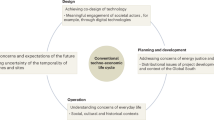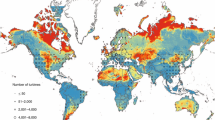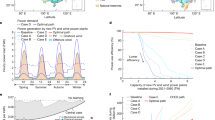Abstract
In the 21st Conference of the Parties held in Paris in December 2015, China pledged to peak its carbon emissions and increase non-fossil energy to 20% by 2030 or earlier. Expanding renewable capacity, especially wind power, is a central strategy to achieve these climate goals. Despite greater capacity for wind installation in China compared to the US (145.1 versus 75.0 GW), less wind electricity is generated in China (186.3 versus 190.9 TWh). Here, we quantify the relative importance of the key factors accounting for the unsatisfactory performance of Chinese wind farms. Different from the results in earlier qualitative studies, we find that the difference in wind resources explains only a small fraction of the present China−US difference in wind power output (−17.9% in 2012); the curtailment of wind power, differences in turbine quality, and delayed connection to the grid are identified as the three primary factors (respectively −49.3%, −50.2%, and −50.3% in 2012). Improvements in both technology choices and the policy environment are critical in addressing these challenges.
This is a preview of subscription content, access via your institution
Access options
Subscribe to this journal
Receive 12 digital issues and online access to articles
$119.00 per year
only $9.92 per issue
Buy this article
- Purchase on Springer Link
- Instant access to full article PDF
Prices may be subject to local taxes which are calculated during checkout




Similar content being viewed by others
References
Statistical Review of World Energy 2015 (BP, 2015).
Clarke, L. et al. International climate policy architectures: overview of the EMF 22 International Scenarios. Energy Econ. 31, S64–S81 (2009).
Clarke, L. et al. IPCC Climate Change 2014: Mitigation of Climate Change (eds Edenhofer, O. et al.)Ch. 6 418–491 (Cambridge Univ. Press, 2014).
Barradale, M. J. Impact of public policy uncertainty on renewable energy investment: wind power and the production tax credit. Energy Policy 38, 7698–7709 (2010).
Global Wind Report, Annual Market Update 2015 (Global Wind Energy Council, 2016).
Lu, X., McElroy, M. B. & Kiviluoma, J. Global potential for wind-generated electricity. Proc. Natl Acad. Sci. USA 106, 10933–10938 (2009).
Zhou, Y. Y., Luckow, P., Smith, S. J. & Clarke, L. Evaluation of global onshore wind energy potential and generation costs. Environ. Sci. Technol. 46, 7857–7864 (2012).
Yu, X. & Qu, H. Wind power in China-opportunity goes with challenge. Renew. Sust. Energy Rev. 14, 2232–2237 (2010).
Yang, M., Patino-Echeverri, D. & Yang, F. Wind power generation in China: understanding the mismatch between capacity and generation. Renew. Energy 41, 145–151 (2012).
Li, J. et al. 2013 Annual Review and Outlook on China Wind Power (Chinese Renewable Energy Industries Association, Global Wind Energy Coucil, Beijing, 2013).
Zhao, Z.-y., Yan, H., Zuo, J., Tian, Y.-x. & Zillante, G. A critical review of factors affecting the wind power generation industry in China. Renew. Sust. Energy Rev. 19, 499–508 (2013).
Han, J. Y., Mol, A. P. J., Lu, Y. L. & Zhang, L. Onshore wind power development in China: challenges behind a successful story. Energy Policy 37, 2941–2951 (2009).
Wang, Z. Y., Qin, H. Y. & Lewis, J. I. China’s wind power industry: policy support, technological achievements, and emerging challenges. Energy Policy 51, 80–88 (2012).
Pei, W. et al. Temporal-spatial analysis and improvement measures of Chinese power system for wind power curtailment problem. Renew. Sust. Energy Rev. 49, 148–168 (2015).
Long, H., Xu, R. & He, J. Incorporating the variability of wind power with electric heat pumps. Energies 4, 1748–1762 (2011).
Chen, X. Y., Lu, X., McElroy, M. B., Nielsen, C. P. & Kang, C. Q. Synergies of wind power and electrified space heating: case study for Beijing. Environ. Sci. Technol. 48, 2016–2024 (2014).
Ang, B. W. The LMDI approach to decomposition analysis: a practical guide. Energy Policy 33, 867–871 (2005).
Electric Power Monthly with Data for July 2015 (US Energy Information Administration, 2015)
Ru, P. et al. Behind the development of technology: the transition of innovation modes in China’s wind turbine manufacturing industry. Energy Policy 43, 58–69 (2012).
Notice on Further Improving Management for Wind Energy Development (China’s National Energy Administration, 2015); http://www.sdpc.gov.cn/dffgwdt/201506/t20150609_695498.html
Regulatory Report on Wind Power Integration in Some Critical Regions in China (State Electricity Regulatory Commission, Beijing, 2012).
Kang, C. et al. Toward a more environmentally friendly, efficient, and effective integration of energy systems in China. IEEE Power Energy Mag. 1, 57–64 (2013).
Wiser, R. & Bolinger, M. 2013 Wind Technologies Market Report (US Department of Energy, 2014).
Masters, G. M. Renewable and Efficient Electric Power Systems (John Wiley, 2004).
Electric Power Statistical Year Book Editorial Board China Electric Power Yearbook (China Electric Power Press, 2006–2014).
Lefevre-Marton, N. Catching Up: the Rise of the Chinese Wind Turbine Industry PhD thesis, Princeton Univ. (2013).
Notice on Enhancing Accommodation of Renewable Power in Three-North Regions. 2 (National Energy Administration, Beijing, 2016); http://zfxxgk.nea.gov.cn/auto92/201602/t20160216_2202.htm
Zeng, M., Zhang, K. & Liu, D. X. Overall review of pumped-hydro energy storage in China: status quo, operation mechanism and policy barriers. Renew. Sust. Energy Rev. 17, 35–43 (2013).
Huskinson, B. et al. A metal-free organic-inorganic aqueous flow battery. Nature 505, 195–198 (2014).
Cheung, K. Integration of Renewables Status and challenges in China (International Energy Agency, 2011).
Madrigal, M. & Stoft, S. Transmission Expansion for Renewable Energy Scale-Up: Emerging Lessons and Recommendations (The World Bank, 2012).
Iyer, G. C. et al. Improved representation of investment decisions in assessments of CO2 mitigation. Nature Clim. Change 5, 436–440 (2015).
Wang, C., Chen, J. N. & Zou, J. Decomposition of energy-related CO2 emission in China: 1957–2000. Energy 30, 73–83 (2005).
Lu, X., McElroy, M. B., Nielsen, C. P., Chen, X. & Huang, J. Optimal integration of offshore wind power for a steadier, environmentally friendlier, supply of electricity in China. Energy Policy 62, 131–138 (2013).
McElroy, M. B., Lu, X., Nielsen, C. P. & Wang, Y. Potential for wind-generated electricity in China. Science 325, 1378–1380 (2009).
Ang, B. W. & Liu, N. Negative-value problems of the logarithmic mean Divisia index decomposition approach. Energy Policy 35, 739–742 (2007).
Wood, R. & Lenzen, M. Zero-value problems of the logarithmic mean Divisia index decomposition method. Energy Policy 34, 1326–1331 (2006).
Rienecker, M. M. et al. The GEOS-5 Data Assimilation System-Documentation Versions 5.0.1, 5.1.0, and 5.2.0, 118 (NASA, 2007).
Report on Market and Existing Projects of Wind Power in China (HUAXIAWIND Xuzhou, 2014).
Acknowledgements
The research was supported by the State Environmental Protection Key Laboratory of Sources and Control of Air Pollution Complex, the Collaborative Innovation Centre for Regional Environmental Quality, MEP’s Special Funds for Research on Public Welfare (201409002), and the Volvo Group in a research project of the Research Center for Green Economy and Sustainable Development, Tsinghua University. It was also supported by the Harvard Climate Change Solutions Fund and the Harvard Global Institute.
Author information
Authors and Affiliations
Contributions
X.L. and M.B.M. conceived the idea for the paper. X.L. conducted the analysis. X.L. and S.L. collected the data. X.L., M.B.M. and W.P. co-wrote the paper. All authors discussed the results and commented on the manuscript.
Corresponding authors
Ethics declarations
Competing interests
The authors declare no competing financial interests.
Supplementary information
Supplementary Information
Supplementary Figures 1–8, Supplementary Tables 1 and 2, Supplementary Notes 1 and 2, Supplementary Methods, Supplementary References. (PDF 782 kb)
Rights and permissions
About this article
Cite this article
Lu, X., McElroy, M., Peng, W. et al. Challenges faced by China compared with the US in developing wind power. Nat Energy 1, 16061 (2016). https://doi.org/10.1038/nenergy.2016.61
Received:
Accepted:
Published:
DOI: https://doi.org/10.1038/nenergy.2016.61
This article is cited by
-
Solutions for recycling emerging wind turbine blade waste in China are not yet effective
Communications Earth & Environment (2023)
-
Grid integration feasibility and investment planning of offshore wind power under carbon-neutral transition in China
Nature Communications (2023)
-
Tubular SbPS4−xSex (0 ≤ x ≤ 3) Clusters as High-Performance Anode Materials for Sodium-Ion Batteries
Journal of Electronic Materials (2023)
-
Evaluate the Impacts of Wind Farm Facilities on Land Values with Geographically-Linked Microdata in China
Environmental and Resource Economics (2023)
-
Cost increase in the electricity supply to achieve carbon neutrality in China
Nature Communications (2022)



